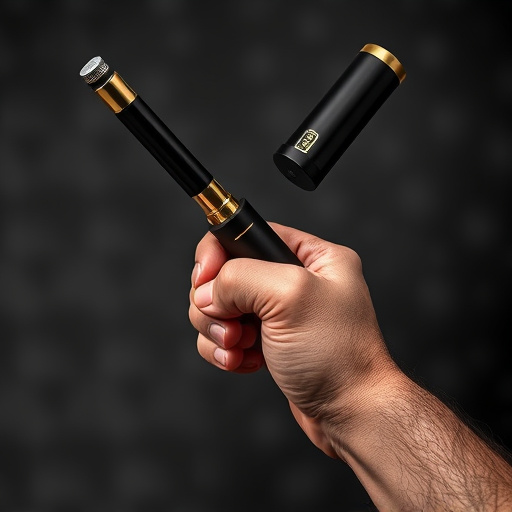When assessing a malfunction with a self-defense expandable baton, identify common issues such as mechanical failures in the extension mechanism, structural damage (bent or broken tubes), seal failure causing fluid leakage, and damaged locking pins preventing collapse. Conduct thorough visual inspections for physical damage and component alignment during extension/retraction. Regular maintenance including cleaning, lubrication, and periodic inspections is crucial to prevent wear and tear, ensuring the baton remains reliable when needed most.
Telescopic batons, a staple in self-defense tools, can malfunction, rendering them useless in critical situations. This guide addresses common issues with self-defense expandable batons and provides troubleshooting steps for effective repairs. From assessing physical damage to understanding mechanical failures, disassembling the baton, replacing components like screws and springs, and applying lubrication techniques, this article equips users to maintain their safety equipment. Additionally, learn about preventative maintenance practices and warranty considerations to ensure your telescopic baton’s longevity.
- Assessing the Malfunction: Identifying Common Issues with Self-Defense Expandable Batons
- – Recognizing physical signs of damage
- – Understanding mechanical failures and their causes
Assessing the Malfunction: Identifying Common Issues with Self-Defense Expandable Batons
When assessing a malfunction with a self-defense expandable baton, it’s crucial to pinpoint the specific issue. Common problems range from mechanical failures in the extension mechanism, where the baton refuses to lock or extend fully, to structural damage such as bent or broken tubes. Other issues might involve seal failure, leading to fluid leakage, or a damaged locking pin that prevents the baton from collapsing.
Identifying these issues requires careful observation. Inspect for visible signs of wear and tear, check for any obstructions in the telescoping sections, and ensure all components are properly aligned. Understanding these common problems aids in effective troubleshooting, ensuring your self-defense expandable baton remains a reliable tool when it matters most.
– Recognizing physical signs of damage
If your self-defense expandable baton has stopped functioning properly, it’s crucial to first assess for any physical signs of damage. Visually inspect the baton for cracks, bends, or any deformation in its structure. These visible indicators could suggest that the baton has suffered some impact and may no longer be reliable for its intended purpose. Additionally, check for loose or missing components, as these can hinder the smooth extension and retraction of the baton.
In the case of a telescoping baton malfunction, it’s essential to pay close attention to how it handles during the extension process. If it fails to extend fully or retracts erratically, it could be due to internal damage or wear on the mechanical components. Look for any unusual noises, such as clicking or grinding, which may signal issues with the locking mechanism or articulation points. Regular use can cause wear over time, but sudden changes in performance often point to more serious physical damage that requires immediate attention and potentially replacement.
– Understanding mechanical failures and their causes
Mechanical failures in a self-defense expandable baton can stem from various factors, such as excessive force, improper usage, or wear and tear over time. These issues often manifest as unexpected folds, stuck extensions, or broken components. Understanding the cause of a malfunction is crucial for effective troubleshooting. For instance, a baton that unexpectedly folds could be due to a bent or damaged pivot point, while a stuck extension might result from debris obstruction or a worn-out sliding mechanism.
Regular maintenance and care can significantly extend the lifespan of your self-defense expandable baton. This includes cleaning the baton after each use to remove dirt and debris, ensuring proper lubrication for smooth operation, and periodic inspection for any signs of damage or wear. By addressing these issues promptly, users can maintain the reliability and functionality of their batons, ensuring they are ready when needed for self-defense purposes.
When faced with a malfunctioning telescopic baton, a systematic approach to troubleshooting is essential. By understanding common issues like physical damage or mechanical failures, users can effectively assess and resolve problems associated with their self-defense expandable batons. With these troubleshooting steps, you’re equipped to get your baton back into top working order swiftly and safely.
